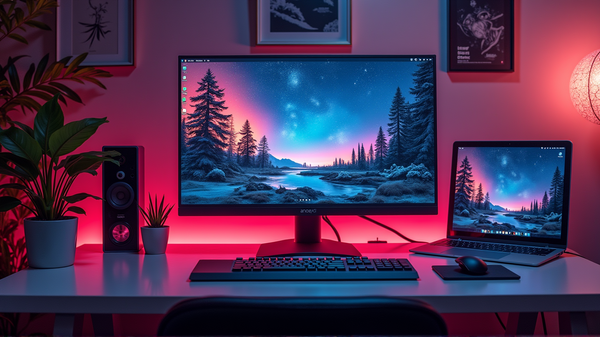Google Unveils Game-Changing Update for Android's Always-On Display
Picture this: your trusty Android phone, resting quietly on your desk, now doing much more than merely showing the time. With Google’s next big update, what was just a static clock display is set to become an interactive powerhouse. Yes, Android’s always-on display (AOD) is getting a complete makeover with an innovative new feature known as “Min Mode.”
A Sneak Peek into Min Mode
Gone are the days when your dimly lit idle screen served as a passive clock and notification center. Google’s Android 17 update introduces “Min Mode,” a revolutionary redesign that transforms AOD into a live, app-driven interface. As stated in Android Central, this new mode allows apps to display simplified, low-power interfaces directly on the AOD without fully waking the screen. Imagine live turn-by-turn navigation, focal workout stats, and vital notifications visible at a glance, all while conserving your phone’s precious battery life.
Empowering Apps with Minimal Interfaces
Min Mode offers app developers a fresh canvas. By introducing new system components like MinModeActivity and MinModeProvider, apps can register themselves to take over the display with minimal, low-refresh-rate interfaces. This ensures that the energy efficiency, known as AOD’s hallmark, isn’t compromised.
Navigating the Future with Google Maps
The leading app eagerly gearing up to showcase this feature is none other than Google Maps. According to the early UI insights, Maps will employ Min Mode to display monochrome, turn-by-turn directions on your phone’s locked screen. This thoughtful integration ensures your route remains visible even when you’re not actively interacting with your device. It’s a subtle but brilliant move to make the smartphone even more indispensable without sapping battery life.
Walking the Fine Line Between Innovation and Efficiency
While Min Mode makes strides in functionality, it’s crucial to tread carefully in terms of developer freedom. Excessive clutter or continuous activity could detract from AOD’s primary goal—balance between visibility and efficiency. Google’s challenge will be to adjudicate how much information can be displayed without tipping the scales unfavorably.
A Glimpse of Tomorrow
In conclusion, Min Mode signifies a milestone for Android users, marking a shift from passive observation to dynamic interaction. As Android Central delves deeper into the Android 17 code, it seems the possibilities for an enriched, energy-efficient user experience are endless. So get ready to witness your Android device’s idle screen evolve from a humble clock into an agile, informative assistant.




